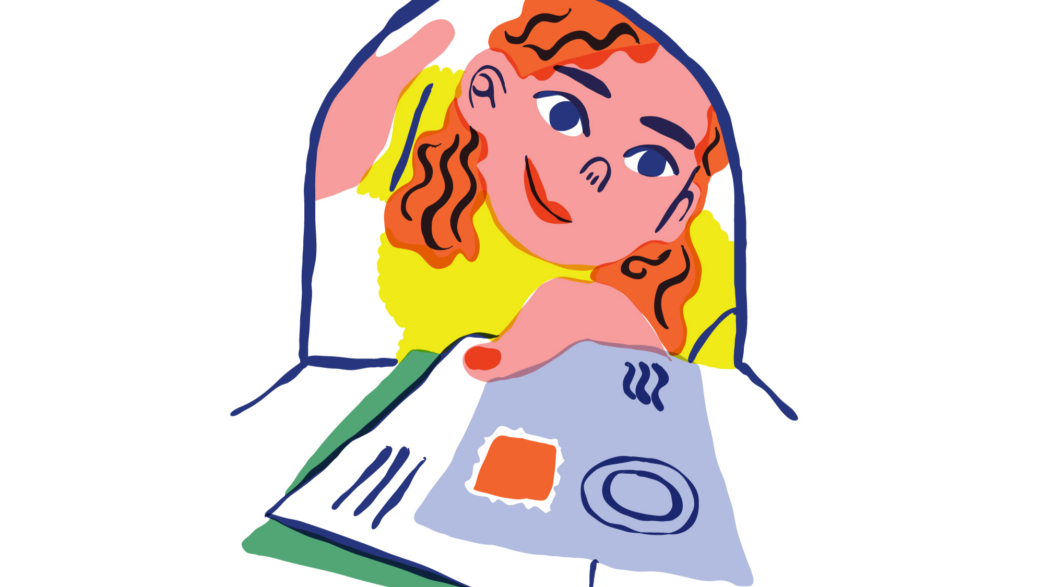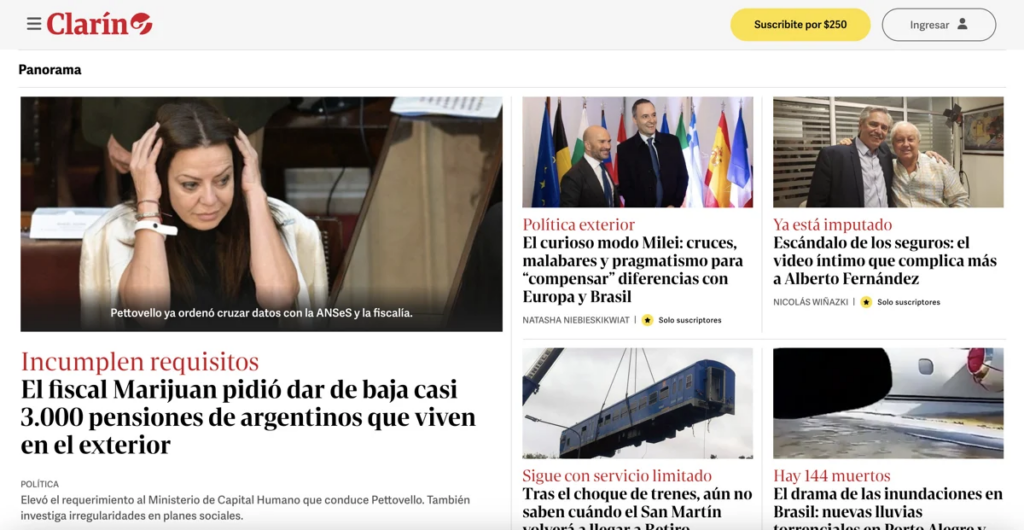

You're reading The Audiencers' newsletter #38, sent out on May 15th, 2024. To receive future newsletters straight to your inbox every two weeks, sign up here.
Too much to share today, so we’re jumping straight in!
- “Decisive notes” – the articles that convert for Argentina’s Clarín
- How many articles should you offer for free before the paywall? There may not be a simple answer, but we can help you work it out
- We’re heading to Copenhagen for WAN-IFRA’s congress – join us for a Sunday evening happy hour
- Paywalls & SEO with The Athletic
- Content to add to your reading list
“Decisive notes” – The articles that convert for Argentina’s Clarín
The Argentine newspaper, Clarín, is the leading Spanish-speaking media by number of subscribers, with more than 700,000 paying users and a goal of reaching one million in the coming years. Having launched their digital subscription product in April 2017, following in the footsteps of the likes of The New York Times, Clarín has undergone an incredible digital transformation.
Like many publishing moving to a digital reader revenue model, the team reflected on the reasons why someone makes the decision to subscribe, leading to them working on a very interesting journalistic concept, internally named “the decisive note.”
When asked why a user becomes a subscriber, the document explains that “there is undoubtedly a factor of adhesion to the brand”, but that subscription doesn’t occur “without shock” – i.e. without a user finding that they can’t access certain content without paying.
This “convincing process can be long,” although “the decision is usually impulsive”, made “by wanting to access an article with differential value and a unique focus,” according to the internal document. “These articles are the decisive ones,” and without them “there are no subscribers.”
The idea was to find an appropriate balance between free access news and “decisive notes”, which would be restricted to subscribers-only.

How do decisive notes help to shape the editorial team’s organization?
Clarín ‘s editorial team is now organized into four large groups. Three focus on the creation of unique content for subscribers (KPIs here are linked to registrations and subscriptions, plus other “quality read” metrics, such as time spent or recirculation), while the fourth aims to attract the largest possible audience. This very clear division of journalistic roles helps Clarín pursue two specific objectives: subscribers and audience.
“Decisive note” articles are decided each day in editorial meetings and approved by the editor-in-chief.
What are the essential elements that make an article a possible “decisive note”?
> Exclusiveness – “the unique and differential character of the content is the most determining factor in the process of attracting subscribers.” i.e. the reader should be aware that this type of content can only be found in Clarín
> Quality and depth – “conversion improves with very well-prepared, rigorous and complete works.”
> Great digital experience – of course, the decisive notes “must meet basic SEO requirements and develop the digital narrative to the maximum”, because “works that present a better user experience achieve better results.”
> Utility for the user – “immediate usefulness” for the reader
Find the full article by Ismael Nafria here, including 9 commonalities between decisive notes.
How many articles should you offer for free before the paywall?
It’s a million dollar question. And one that every publisher with a digital subscriptions model has asked themselves at least once.
On the surface, it seems like a fairly straightforward question. But when you start to dissect it, there’s so many factors at play… metered vs freemium, soft conversion steps, your audience, your content, your revenue priorities…
So, firstly, let me clear something up – there’s no single answer to this question (sorry!). It depends on all of the above, and more. But what we can do is help you find the answer.
Test, test and test again
> Japan’s Nikkei Online tested reducing the number of free articles per month from 10 to just 1, leading to a 20% increase in conversion rates to subscription (1.17% vs 1.72%)
> Alternatives Economiques in France tested a paywall vs registration first journey. Although the subs-only journey led to higher immediate revenue, this model would actually lead to a future loss of income. In short, instead of a cyclone-style model where you convert first and engage later, this case suggests that it’s more valuable to the business in the long term to let readers discover content and the publication through registration without requiring them to subscribe straight away.

Consider more than just conversion rate
> Paywall visibility: out of total traffic on premium articles, how many readers actually see the paywall? Poool data suggests that between 40-60% of your audience who visit a premium article will never see the paywall!
> The revenue trade off: the number of articles to offer for free also depends greatly on the trade off between various revenue streams, particularly advertising vs subscriptions.
Those at the initial stage of their move to digital will be more dependent on advertising revenue, whilst the most mature publishers (‘pioneers’) have over 50% revenue from digital subscriptions. For example, if we put the baseline meter at 5 articles for free, you may well have fewer subscribers but you’ll also have fewer page views and ad revenue at risk. However, with a static meter at 2, you’ll have more subscribers but higher ad revenue at risk, and significantly more page views at risk.
> Find the full article on WAN-IFRA
Paywalls & SEO at The Athletic
Shelby Blackley, Manager Newsroom SEO at The Athletic & Co-founder of WTF is SEO?, spoke at our Toronto Festival about how to optimize SEO with your paywall in mind, including lessons from her work at The Athletic.
One key takeaway: think about journalism based on your paywall
Below, on the left, the traditional audience funnel that you use everyday. On the right, the language changes slightly to make this into a paywall journey, but the idea’s the same. And journalism needs to fit into this.
- Where does THIS journalism fall within the paywall journey?
- How is THIS journalism different than any other publisher’s?
- (And if it isn’t, how do you make it?)
- Who is most likely to buy THIS?

For example, articles on March Madness can be found across the web, and The Athletic wants to rank highly on SEO here, acquiring potential new audiences and bringing them into the funnel.
By enticing a reader in from Google, The Athletic engages immediately by fulfilling a search intent. Blocking immediately with a paywall will hurt this, so instead they chose to put a registration wall after the lead-in.

But then, within this article, they’ve linked higher value (premium) content that’s blocked by a paywall with a very low offer to convert this reader. I.e. the premium links within the non-premium content has now created the paywall journey.

> Full summary of Shelby’s session on The Audiencers, and more of Shelby’s impressive work on WTF is SEO?
Content to add to your reading list:
- How Duolingo reignited user growth, the story behind Duolingo’s 350% growth acceleration, leaderboards, streaks, notifications, and innovative growth model
- How we developed a custom collaborative editor for our journalists at Contexte
- How Surveys Can Accelerate Audience Development
The Audiencers’ newsletter: from professionals to professionals
Sign up to our newsletter – real-life examples, expert points of view and inspirations from publishers around the world to help you do your job better. Sent every two weeks.


